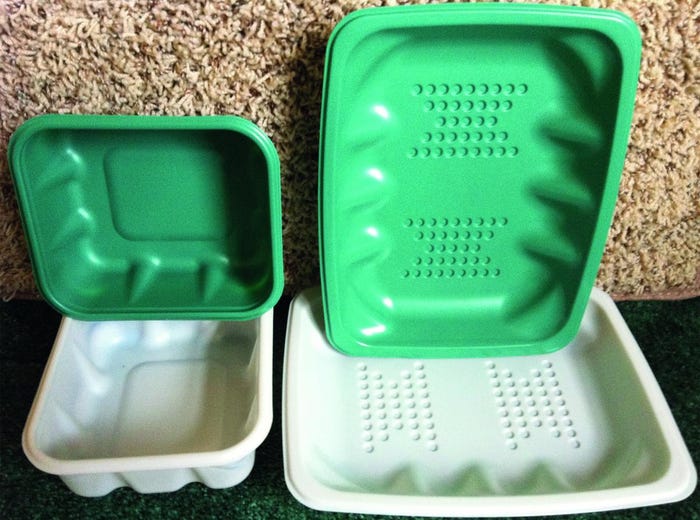Range of coloring options expanded for compostable bioplastics
Recently, masterbatch producer AF-Color, a branch of Germany-based AKRO-PLASTIC GmbH, successfully completed Vinçotte certification of its AF-Eco product range, thereby earning the "OK compost" seal. AF-Color will bear the certification number S467. This milestone achievement represents an important expansion of the coloring options available for compostable bioplastics.
June 3, 2015
Recently, masterbatch producer AF-Color, a branch of Germany-based AKRO-PLASTIC GmbH, successfully completed Vinçotte certification of its AF-Eco product range, thereby earning the "OK compost" seal. AF-Color will bear the certification number S467. This milestone achievement represents an important expansion of the coloring options available for compostable bioplastics.
Technically speaking, coloring compostable bioplastic materials presents few challenges. What has been the main problem up to now is finding colorants that do not affect compostability of the material, as defined in the European Standard EN 13432. This standard specifies, among other things, that a compostable material must be biodegradable, but also that the content of non-biodegradable filler materials may not exceed a maximum of 5%, or 1% for each individual filler material. The heavy-metal content, primarily in packaging applications, is also regulated within this standard Most of the commonly used organic colorants today are not biodegradable, and will therefore remain behind as in the form of microparticles, long after the bioplastic has gone. Moreover, the use of common organic pigments, such as those in the copper-phthalocyanine family, is ruled out by their heavy-metal content.
Most of the commonly used organic colorants today are not biodegradable, and will therefore remain behind as in the form of microparticles, long after the bioplastic has gone. Moreover, the use of common organic pigments, such as those in the copper-phthalocyanine family, is ruled out by their heavy-metal content.
And while there are various inorganic pigments that, although not biodegradable, are permitted to be used because of their natural origins, these are mainly suitable for producing what are commercially known as “earth” tones, and unkindly referred to as “blah."
Obviously, compostable bioplastics have long been used for applications such as single-use carrier bags, waste bags and bin liners—staid applications that are generally not characterized by the use of strong colors. The same cannot be said of packaging applications, in which the use of bright colors is ubiquitous. And yet,packaging is precisely an area that is starting to be penetrated by compostable plastics. Colored biopolymers are also used in the food packaging industry, to manufacture meat trays and disposable cutlery, for instance. These meet the requirements specified by the German Federal Institute for Risk Assessment (BfR) and the United States Food and Drug Administration (FDA).
Color is therefore becoming an increasingly important aspect in the material selection process, and today is almost exclusively accomplished using color masterbatches made up of polymer carrier materials and corresponding pigments.
Color in compostable bioplastics is a growth area. At least, this is what AF-Color is betting on. Using proprietary technology, the company developed its range of bio color masterbatches—the AF-Eco series—based on PHA and using organic pigments for which limit values have been set, in order to qualify for biodegradable applications in accordance with EN 13432. As Akro-Plastic last year acquired the technology for Metabolix’ MVERA B5010 and B5011 PHA products and the MVERA trademark, its PHA supply should present no problem.
And now, with this latest Vinçotte certification, AF-Color can maneuver freely within the certified pigment pool, “to realize any number of different Vinçotte-certified color adjustments in a range of colors and blacks," in the words of Dirk Schöning, Sales and Distribution Manager at AF-Color.
About the Author(s)
You May Also Like


